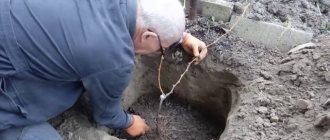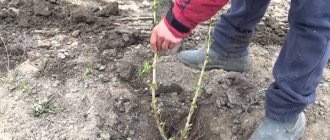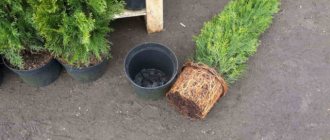Classification of climbing roses
These roses are called climbing roses because of the unusually long stem of the bush, which tends to curl. All varieties of climbing roses are obtained by selection based on rose hips (wild rose bush).
This flower is ideal for vertical landscape decoration. With their help, you can perfectly decorate a gazebo, an unattractive wall of an old building, or create an arch; you just need to decide what type to plant.
Floriculture practice uses the following classification of climbing roses:
- claims;
- curly (ramblers);
- climbers (climbing).
The group of cultivars includes hybrid tea, floribunda and grandiflora varieties. Climbing bushes are always distinguished by their power and large, but few inflorescences. Often they can bloom again in one season. It is recommended to grow these plants in warm and mild climates, where they will not be threatened by severe winter cold.
Ramblers are a variety of roses that are descended from the Vihura variety and its multi-flowered representatives. They have very long and quite flexible creeping stems, which sometimes reach 5 meters in length. These climbing flowers are actively used to decorate pergolas and arches. Inflorescences can be simple or double. Although Ramblers do not amaze with their strong aroma and large size, the abundance of inflorescences on the bush is breathtaking. Flowering time usually occurs in June and can last a whole month. Small leaves, small numerous inflorescences and long lashes - this is the appearance of the Rambler rose bush, which is also frost-resistant.
As a result of successful selection and crossing of Ramblers, hybrid tea roses and the floribunda variety, flower growers learned about the climbing species of climbing roses - climbers. The inflorescences on the bushes grow in an organized and abundant manner. Often flowering can occur twice in one summer season. This group of roses tolerates frosts well provided traditional shelter is used; climbers also do not suffer from powdery mildew. A striking representative of this plant species is the Metanoia rose.
Reasons for transplant
In the following cases, plant replanting is mandatory. If absolutely necessary, this is done even in June and July:
- Unsuitable soil composition and acidity. Roses do not like loose sandy loam and heavy loamy soils. Unsuitable soil leads to the squeezing of the root system to the surface, which provokes the death of the plant.
- Poor soil. The soil in the rose garden is gradually depleted, so it is moved to a new location every few years. If this is not done, flowering will be poor.
- Overgrown bushes. Bushes that are too large will lack nutrition and light, which will affect the splendor of flowering and the general well-being of the plant. In this case, the bush is pruned, divided and planted in a new place.
This is interesting:
How to care for a home rose in a pot - a guide for beginner gardeners
A guide to cutting roses in the fall at home for beginning gardeners
Simple ways to save rose cuttings until spring and plant them correctly
Suitable place and time for landing
Full care of climbing roses requires you to fulfill the basic requirements of plants, for example, choosing a suitable location.
Forcing tulips by March 8: planting technologies, cultivation
Beginning flower growers are sure that all roses, without exception, are very finicky to care for. This is not entirely true; the main thing when growing is to provide these queens of the garden with the necessary conditions for growth, and in the future they will require no more attention than other flowering individuals.
The first condition that must be met is the optimal place on the site for climbing roses. In the morning, it should be well illuminated by the sun’s rays so that the dew can dry out faster and not provoke fungal diseases, and at lunchtime it should be protected by shade from excess ultraviolet radiation. Climbing roses should also be protected from draft winds. That is why there is no point in planting bushes in the corners of buildings: they will be exposed to drafts.
The southern and eastern sides of the home will provide the bushes with the necessary conditions for lighting and protection. If you plan to plant bushes in the garden under supports, then the choice of location should be approached through the prism of excluding unfavorable factors. Nearby structures (buildings, high fences, gazebos) can block direct rays of the sun and cold air currents.
Transplant timing
A favorable time for moving rose bushes to a new location is early spring and autumn (from the second half of August to mid-September) . It is not recommended to delay replanting until late autumn, since poorly rooted plants will not survive the winter.
Pros and cons of transplanting in August
The main advantage of transplanting in August is that by this time the shoots have already matured and the growth phase has ended. Therefore, after transplantation, the plant directs all its forces to rooting and developing the root system. When moving the bush in the spring, the awakening buds take the main nutrition for themselves - the plant is depleted, since the roots have not yet taken root.
Other benefits of moving rose bushes to a new location in August:
- optimal air humidity (70–80%, which is 10–20% more than in spring) - increased humidity promotes rapid establishment of plants;
- reduction of watering - due to the large amount of rainfall, roses will not have to be moistened as often;
- warmed soil - soil temperature above +14°C has a good effect on the survival of plants in a new place.
On the other hand, when grown in Siberia and northern regions, cold weather sets in quickly, and even when transplanted at the end of summer, the plant may not have enough time to take root. In this case, the procedure is carried out in the spring.
Reference. There are varieties of roses that are planted and transferred to a new location only in the spring (for example, Black Prince or floribunda).
The climatic conditions of the region and the specific variety of crop will help determine when to transplant a rose from one place to another.
Favorable days according to the lunar calendar
For those who are accustomed to checking the moon when carrying out work in the garden, here are the favorable days for planting and replanting roses in 2021:
- April 7;
- 4-5, 20-21, 23-24, 29–31 May;
- June 1-2, 7-8, 26–29;
- 4, 14-15, 23–26, 31 July;
- August 1-2, 10-11, 20–22, 28-29;
- September 5–8, 13–16.
Requirements for soil composition
Almost all types of these flowers prefer loamy and permeable soil. Climbing roses have a developed root system, which often goes deeper than 1.5 m into the bowels of the earth. Therefore, if there is groundwater nearby, it is recommended to plant bushes on a hill. If the soil is too clayey or, on the contrary, sandy, then soil adaptation is required. The clay composition is diluted with bone meal, humus, humus and sand, and chernozem is added to light soils.
Optimal deadlines for completing work
Professionals believe that planting and replanting large trees and shrubs is best done in winter. For this, special equipment is used. If it is not possible to use a manipulator, then the old method of gradually transferring adult woody plants to another place is used. The older the rose, the more important it is to carry out the work consistently. Prepare the plant in the fall and plant in the spring.
The work is performed in this order:
- In autumn, after the leaves fall, the climbing rose is pruned. All shoots, without exception, are shortened to a height of 20-25 cm. (It looks as if the hybrid tea variety is being prepared for wintering).
- The bush is watered abundantly; you will need 30 - 40 liters of water. After this, the plant is left for 2 - 3 days so that the water moistens the roots to their full depth.
- The outline of the future coma is outlined around the rose. Its diameter is 30 - 50 cm, depending on the size of the bush. The older the rose, the larger the com.
Tip #1 . You should not form a lump that is too large if it is carried manually, without mechanical lifts.
- A trench is dug along the intended contour, 30 - 50 cm deep and 30 cm wide. To transplant roses in the spring, a lump is formed in the fall.
The roots that protrude beyond the coma are carefully trimmed with sharp pruning shears, and roots that are too thick are shortened using a garden hacksaw.
- A ring-shaped trench is formed around the bush. It is filled with sand. Before the onset of frost, the bush produces new roots, which manage to grow stronger before the onset of cold weather. The root system is concentrated in the fertile layer, strengthening the lump, as if entangling it with a web.
- The ground part is hilled up. The shoots and ground around the bush are covered with leaves or covered with spruce branches to protect the bush from frost. In severe winters, the shelter needs to be strengthened. Various types of spunbond are used. If this is not the case, you can use a natural remedy, shovel more snow.
In this form, the rose overwinters until spring transplantation. During this time, the regrown roots will strengthen and the lump will thicken. This state of the plant will significantly reduce stress on the plant when it is moved to a new location (
Planting in autumn and spring
It is permissible to start planting and replanting all types of beauties with thorns in the garden in spring and autumn. Autumn is the most productive time for planting roses. Caring for climbing roses this season requires you to personally evaluate the condition, appearance, variety and quality of the plant.
It is also better to plant this flower in the fall because it takes root in a new place faster, and the next year it will look full and healthy.
Planting stockrose and caring for it during cultivation
Planting material can be either an independent plant with its own root, or grafted onto a rose hip. This fact is worth paying attention to due to some differences in care.
If the climbing rose is grafted onto the root of a rose hip, then it must be planted so that the grafting site is 10 cm deep into the soil. This is done in order to subsequently obtain a full-fledged root system from the rose itself (reproduction), and the rosehip roots will simply die off in the future. If the grafting site is left above the soil surface, then both the rootstock and the graft will be subject to depletion and death in the future.
Before planting, all roots of bush roses must be soaked for a day in water with copper sulfate (3%). All leaves on the plant are removed, and the shoots and roots themselves are shortened with pruning shears. The cut areas should be powdered with crushed coal. If buds have developed below the grafting site, they should also be removed so that the bush does not turn into a rose hip.
The planting hole must be large enough for the bush to be transplanted. Most often, this is a depression of 50 cm * 50 cm. A distance of at least 100 cm must be maintained between neighboring roses. The turf fertile layer must be mixed with compost or rotted manure.
It is recommended to make a hill in the center of the hole, on top of which a rose bush will be placed, and the roots will be spread along the slopes. Having installed the bush in this way, you need to fill the roots with soil, compact it and water it. Immediately before planting, it would be useful to dip the roots in a clay mash: 10 liters of water, 0.5 kg of clay, 3 tablets of phosphorobacterin and one of heteroauxin.
Climbing roses are propagated traditionally: by dividing the bush, layering, cuttings
When planting roses in the spring, you should be prepared for the fact that these bushes will lag behind those planted in the fall in development for some time.
Acquired shoots are significantly shortened before planting (roots - up to 30 cm, and branches - up to 20 cm). The planting principle and depth of the hole do not differ from the autumn one, you just need to ensure more abundant watering. For optimal rooting, you can arrange a shelter made of transparent film over the bush, which will create a greenhouse effect.
Such measures are necessary when there is a threat of hypothermia of the bushes due to return frosts. If the weather is warm, there is no need for such a design; it will be enough to just mulch the area around the trunk.
Hybrid tea roses: planting, growing
How to plant a climbing rose in the fall
Planting a plant in a new place always runs the risk that the flower will get sick and not take root. To reduce this, it is recommended to follow some rules:
- Select a draft-free area for the climbing rose, with sufficient lighting during the first half of the day, soil without stagnant water, and a favorable vicinity of other plants.
- Prepare the soil for planting in advance. Add clay to sandy soil and sand to clayey soil.
- Dig, make holes, add nutrient substrate into them.
- Pour water and leave for several days.
- Properly prepare the seedlings by cutting off old, dry, very long branches and broken roots.
- Land carefully.
After transplanting a climbing rose to another place in the fall, there is no need to tie the branches to supports. It is enough to prepare them for winter shelter by tying them together.
Selecting a landing site
A well-chosen site is important, namely:
- Be well lit, but so that the bush is not exposed to the scorching sun all day.
- If there is not enough sunlight, the plant will have weak shoots and inflorescences. If there is a lot of sun, then the leaves on the branches and petals on the flowers burn.
- Have sufficient area for installation of a stationary support, further growth of the root system and branches, and the possibility of complete shelter for the winter.
- Do not coexist with trees that have a strong root system and crown, so as not to create conditions for weakening flowers and damage by fungal diseases.
- Have soil without close groundwater, since the roots of climbing roses can reach more than 1 m in length, and they need air- and water-permeable soil.
Comment! The ideal place for growing climbing roses is the southeast side.
Soil preparation
After selecting a site, you need to prepare a seat:
- dig a hole slightly larger than the size of the planting ball;
- remove all weed roots from the hole;
- put drainage made of crushed stone, pebbles or broken bricks at the bottom;
- add fertile substrate;
- pour water.
Leave in this state for 2-3 weeks for the soil to shrink and be impregnated with fertilizers.
Preparation of seedlings
When the site for planting in the fall is completely ready, begin digging up a climbing rose bush, taking into account the following recommendations:
- A day before digging, water the soil under the bush with water to better form a coma. The soil retained on the roots will help the plant take root more easily.
- Remove the rose branches from the support; if they are in the way, tie them with rope, removing the leaves.
- Do not remove young shoots, but cut off branches older than 2 years.
- Dig a groove around the bush at such a distance as not to damage the roots.
- Dig the rose as deeply as possible until a lump forms. If long, thick roots are in the way, they need to be cut off with the sharp end of a shovel.
- Before lifting it out of the ground, wrap a large earthen ball with some fabric or polyethylene.
- Lift the lump by lifting it with a shovel or other tougher object, using it as a lever.
- Carefully move the dug up rose bush to a new planting site.
If the earth has crumbled, then the roots need to be trimmed, thereby strengthening them. If the bush is not planted immediately and it has to move, it is recommended to wrap the roots of the plant along with the soil with a wet cloth.
Important! Climbing rose seedlings with an open root system should be placed with their roots in a bucket of water a day before planting.
Landing rules
According to the rules, the root collar of the bush should be 5-10 cm below the soil level, so if necessary, the hole can be dug up or covered with earth. Carry out the landing as follows:
- Place the dug bush in the middle of the planting hole.
- Straighten the roots so that they do not bend upward.
- Sprinkle the lump with fertile soil to the middle, lightly tamping it down.
- Water generously and let the water sink into the soil.
- Then fill it up to the top level, compacting the soil, and water it again.
- Sprinkle with soil and trample it around the bush.
After a few days, the soil may settle. Then you will need to fill up the soil.
Subtleties of care
This is not to say that climbing roses are too whimsical, but you will have to follow some rules. Competent care means:
- preventive and therapeutic treatment against diseases and pests;
- regular watering;
- fertilizing with organic and mineral fertilizers;
- providing support (arch, pergola, wall, lattice);
- pruning;
- removing weeds and loosening the soil.
To water one adult plant, 1–2 buckets of water once every 10 days will be enough. It is recommended to feed rose bushes throughout the summer season up to 2 times a month. In the fall, it is worth spilling the soil with a solution of ash (1 glass of wood ash per 10 liters).
To navigate the fertilizing schedule, it is recommended to apply fertilizers 5 times throughout the entire growing season. Experienced gardeners do not apply fertilizer during the active flowering period of the bush, continuing to feed the bushes only after they wither.
Transplant instructions
How to properly transplant a rose to a new place at the end of summer or beginning of autumn? Immediately before the procedure, the shoots are cut to approximately 20 cm, and all damaged and weak shoots are removed.
The transplant itself is carried out in several stages:
- From 5 to 10 liters of water are poured into the bottom of the pit (depending on its size). During planting, the soil should be loose and well moistened.
- The dug bush or part of it is placed in the hole so that the neck is at ground level. If the rose was grafted, for example, onto a rose hip, the neck is slightly deepened.
- The roots are evenly distributed, sprinkled with a pre-prepared fertile mixture and carefully compacted as they are buried.
The transplanted rose is watered and, if necessary, shaded from direct sunlight.
Transplanting a large bush
Moving a large bush is no easy task. First, a trench is dug according to the projection of the crown and, gradually deepening it, an earthen lump is removed. Roses are capricious, so they are replanted with a large earthen ball.
Advice! To remove the bush along with the earthen lump, water it abundantly 1-2 days before digging. To make it easier to work with and not prick itself on the thorns, the ground part is wrapped with twine and a bag is put on it or wrapped with thick fabric.
To prevent the soil from falling off the roots, wrap the lump with cloth or plastic wrap. Long roots that prevent the lump from being removed are carefully cut off with a sharp shovel. Before planting, the cutting areas are dipped in charcoal.
The extracted bush is placed on a wheelbarrow or a spread cloth and dragged to the planting site. If the rose is moved to another area, the earthen ball is moistened and wrapped in damp burlap.
Replanting an old rose
Rose bushes that have been growing in one place for more than 10–15 years need to be replanted and updated. Rejuvenation is carried out in spring or early August.
Before starting to dig, the old bush is pruned, shortening all the stems to 15–25 cm from the root collar. All dry, diseased and thin shoots are completely removed. Cut off all small and large branches growing inside the bush.
Then they clean the root collar: dry stumps from old stems have accumulated around it for years. They are cut or sawed off, leaving only healthy shoots with two or more buds.
Attention! Repeated transplantation or division of the bush is carried out no earlier than after 3-4 years, since adult plants have difficulty taking root in a new place.
Afterwards, the root system is tidied up. Dry roots and those with signs of disease are cut out, long ones are shortened to 20–25 cm. A clay mash is prepared from water, clay and compost or rotted cow manure with “Heteroauxin” or “Kornevin”. The roots and root collar are dipped in the mixture. The prepared bush is planted in a new place.
Transplantation during flowering
If you want to replant a rose during flowering, this year you will have to sacrifice beauty and remove all flowers and buds from the plant . This helps the rose quickly take root in a new place and direct all its efforts to restoring the root system rather than flowering.
During such a transplant, they take special care of the roots, trying to minimally injure them. Otherwise, the flower is transferred to a new place according to the standard scheme.
Replanting a climbing rose
When moving climbing varieties to a new location, excavation begins by removing the shoots from the support. For ramblers, all the shoots of the current year are preserved, and at the end of August (if the transplant is carried out in the spring), the tops are pinched so that the branches become woody. Shoots older than 2 years are completely removed immediately after flowering.
When moving the climbers, all long shoots are shortened by 1/2 or 1/3, otherwise the bush is difficult to transport to a new location.
Moving a rose by dividing the bush
If it is necessary to divide the bush, it is cut into pieces with a knife, pruning shears or saw. On each, developed roots and one or more shoots are left. The shoots are shortened by 2/3, and the wounds formed during digging and dividing are cleaned with a knife and powdered with crushed charcoal.
After planting, the bushes are watered abundantly and covered with damp soil to protect the shoots from drying out by the sun and wind.
Transplanting bushes
It is known that it is not always possible to find a suitable place for rose bushes, but replanting mature bushes is often not recommended, unless for rescue. A good time for transplantation is autumn (last days of September - beginning of October). These deadlines must be met in order to preserve the plant and give it time to fully take root.
When transplanting from one place to another in spring, you should choose an early time, while the buds on the shoots have not yet awakened.
When the time for replanting has come (in autumn), the vines should be removed from the support, the bushes should be dug widely around the root, then the plant should be removed. Trim all torn hairy roots with pruning shears. In the new location, straighten the root system, cover it with fertile soil, compact the soil and water generously. A few days after replanting, the bushes should be further hilled, and then this procedure should be repeated before winter.
When transplanting Ramblers, young shoots are left untouched. One only needs to pinch the tops of the shoots in advance, back in August, to speed up their lignification. Two-year-old shoots are cut off completely. The Clymer and Climing varieties are replanted according to a similar scheme, only long shoots in their case should be shortened by 50%.
How to replant an adult climbing rose in the fall
An adult climbing rose is transplanted to another location in the fall. An adult plant tolerates transplantation worse than a young one and may be sick for some time. It is necessary to replant an adult rose only if it may die in its old place. In order to strengthen the plant, it is generously fed with fertilizers and watered before transplanting.
It is recommended to combine planting in the fall with pruning, shortening long stems and cutting off old and dried ones.
Advice! An adult rose will more easily take root in a new place if new shoots are removed for 1-2 seasons, preventing the bush from blooming. Thus, nutrients will be directed to strengthening the root system of the plant.
Cultural pests and their control
Frequent uninvited guests of roses are spider mites and aphids. To combat these pests, special preparations will help:
- Aktellik;
- Decis;
- Operacode;
- Spark;
- Fitoverm;
- Intavir;
- Aktara.
Insect pests are not always the cause of wilting or death of rose bushes. The plant and diseases affect:
- powdery mildew;
- black spot;
- koniothyrium;
- gray rot, etc.
Growing verbena from seeds: planting, care, propagation
First, you should correctly diagnose the disease, and then immediately begin treating the plantings. Although in the case of bacterial cancer, treatment will not bring any benefit, and the bush will need to be disposed of by burning.
Choosing a place to grow a crop
Particular attention should be paid to choosing the place where you plan to grow the climbing rose. So, there are some important rules:
- in the shade, roses will bloom sparsely from year to year;
- in the bright sun, plants quickly fade, and flower petals have an unnatural, dull shade;
- climbing bushes should be protected from strong northern winds and drafts;
- high air humidity and nearby groundwater can significantly harm the plant;
- Climbing roses cannot be planted under the crown of tall trees, since every time after rain the plants will remain in conditions with high air humidity;
- When there is insufficient air circulation, spider mites begin to infest climbing roses.
Thus, the south-eastern slope is best suited for growing climbing roses. Preferably, during hot daytime hours the plant should be in the shade, and in the morning and evening it should be illuminated by sunlight. The soil should be well drained, groundwater should be at a depth of at least 1 meter.
Some other comments about choosing a place to grow climbing roses are shown in the video:
The feasibility of pruning
Bushes are pruned for several reasons: to prolong and stimulate flowering, to obtain a beautiful crown and shape of the plant, and also when necessary. It is a well-known fact that inflorescences most often form on last year’s (basal) shoots.
Perform the procedure at the beginning or end of the season. After winter, dry, frozen shoots up to the bud at a height of 40-50 cm from the ground level must be removed. In the fall, before the plant prepares for dormancy, all basal shoots must be cut off at the very root, leaving only fresh young ones, which will bear inflorescences next year.
If climbing roses bloom twice per season, then the bushes should have at least 3 shoots of the current year and approximately the same number of basal branches. If it is difficult for an inexperienced gardener to decide on rose vines, it is recommended to leave 3-4 of the strongest basal shoots, only slightly cutting off their tops.
On grafted bushes, it is imperative to remove shoots from rose hips. This should be done throughout the season, without waiting for spring or autumn.
How to divide a rose bush. How to properly divide and replant a rose bush?
Many gardeners love roses very much. Often my rose bushes grow to such an extent that they block the path in the area and interfere with the passage. The question arises of how to divide the bush. The best time for this, in my opinion, is the end of September and the beginning of October. There is still a lot of time before the onset of frost, and the plant has every chance to take root well.
I divide the bushes very simply, since roses are quite tenacious plants. The photo below will clearly show how to divide the bushes. Even if I accidentally damage the root of a rose, this will not prevent the bush from taking root well after dividing and planting in a new place.
Dividing and replanting a rose bush.
If the question arises about dividing the bush, then at the same time I carefully check all the shoots. I remove some of them, the weakest ones - this will rejuvenate the plant.
If the bush is supported by supports, then I take them all apart and untie the ties. Now I carefully dig out the part that needs to be transplanted with a shovel. This is the most difficult task for me. It needs to be done as carefully as possible. Most likely, it will not be possible to save every root, but that’s okay, the bush will recover.
Now you need to cut off all the extra branches. For this it is better to use pruning shears. And if the branch you come across is thick and strong, then use a small hacksaw. For a small volume of roots, I always leave no more than 2-3 strong shoots. This will make it easier for the bush to recover. I shorten the main shoots to half the length.
Before planting, I dip the roots in a solution of water and manure, 1/5. This way the plant will immediately receive feeding, will survive replanting more easily and will take root faster. I pour the rest of the mullein under each bush and also add soil on top.
The hole should be deep enough, 40 by 40 cm and up to 50 cm deep. I buy special soil for roses in the store and mix it with the main fertile layer in equal proportions, 50/50. I use broken slate for drainage. The roots must be well covered with soil; they must be completely buried. I pour less than 3 buckets of water onto one such transplanted root. After which I again sprinkle it with a layer of earth, this will prevent the moisture from quickly evaporating, will provide protection to the roots and will allow them to withstand the winter cold well.
Most likely, next summer this bush will not bloom profusely; it will still be recovering after replanting. If I see that the bush is weak, but buds still form, then I cut them off. This is necessary so that the plant can better develop its root system. But in a year it will certainly produce many flowers.
Don't be afraid to replant and divide your rose bushes, it's quite easy. Follow my recommendations, and everything will certainly work out!
Preparing for winter
You should start covering when autumn weather arrives at -5 C. You should not cover it earlier, so as not to provoke root rot. Also, the plant must get used to cold weather and develop a slight immunity to it.
The process of covering roses is as follows:
- remove the flower lashes from the support;
- remove dry leaves, too small shoots and shoots;
- tie all the lashes together with twine;
- arrange a base for the lashes from dry grass, spruce branches, etc. and place a “bundle” on them;
- Having fixed the lashes on the substrate, they should also be covered with dry grass and sprinkled with soil;
- With the final layer it is necessary to protect the covered roses from precipitation, so roofing felt, slate, lutrasil, etc. can be used.
On thaw days, it is recommended to sometimes remove roofing material or lutrasil from roses to give the plant some fresh air. And they can be fully opened with the onset of warm days.
Start of transplantation in August or autumn
The bush must be dug out carefully, in a circle, retreating two spade bayonets from the middle of the bush. Dig deeper to preserve as many roots as possible. After you dig them up, shake off the soil and cut off the torn and shaggy ends of the roots with pruning shears. After this, you can safely plant it in a new area, in a hole prepared in advance.
During planting, make sure that the roots do not bend upward, straighten them. Bury the grafting site or root collar five centimeters below the soil level. Compact the soil around the edges and water thoroughly. After a few days, the soil will settle, so you will have to add more. However, make sure that the plant does not “settle” too much. If the rose is still deep, then carefully dig the bush up with a shovel and compact the soil again.
If the ramblers have managed to form long shoots after planting (in the fall), then there is no need to tie them back to the support. This can be done in the spring. In the meantime, you can freely tie them all together and, with the onset of persistent cold weather, bend them to the ground, covering them for the winter.
Reviews and comments
- Lera Incredibly beautiful roses, I used them to decorate the veranda. In summer they provide excellent protection from the sun. The rose blooms for quite a long time, and it smells very good. These flowers are completely unpretentious to care for.
Nina I really like these climbing roses. But I’ve never grown them myself, I’ve only seen them at my friends’ dachas. Now I bought a dacha and will grow my favorite flowers there. Now I’m studying all the intricacies of planting and care so as not to ruin it.
Secrets and features
Regardless of the variety, age and condition of rose bushes, there are uniform requirements for replanting:
- use clean gardening tools to reduce the risk of infecting a weakened rose;
- provide air cover for the winter for flowers transplanted in the fall;
- replant bushes no more often than once every 3-4 years;
- Before replanting, remove dry, diseased stems, buds and flowers.
In addition, there are special rules according to which different types of perennial flowers are replanted.
How to replant a blooming rose
It is possible to replant a rose during flowering, but the procedure will require more time and effort. It is recommended to do this only if absolutely necessary. Old, large specimens may die due to severe stress. For small bushes, shoots are radically pruned, leaves and flowers are removed. This reduces the percentage of moisture evaporation, and all forces are directed to rooting. In the summer heat, frequent watering is required; the soil is kept moist until new shoots appear on the shoots.
It is recommended to spray, including biostimulants. Root feeding is carried out 3 weeks after transplantation.
Transplanting climbing species
The main difficulty lies in carefully freeing the shoots of climbing and climbing varieties from the support. The optimal period to successfully transplant a climbing species is the autumn months. They begin to prepare the bush for moving in August. The top of young shoots is shortened so that by autumn it is partially lignified. Old stems are cut by 2/3, diseased and dry branches are removed. The cut site is disinfected with ash or garden varnish.
Replanting old bushes
It is difficult to transplant a large or old rose to a new location due to the large size of the overgrown root system. Digging up and moving the flower is easier with two people. It is recommended to replant an adult rose in autumn or early spring. Growing conditions are selected as close as possible to the previous ones. Before you start digging, prepare clean and sharp tools that are used to cut off too long root shoots. Roots injured by transplantation are easily affected by pests and diseases, so the ground and open areas are treated with a solution of potassium permanganate.
The rose has earned a reputation as a capricious flower. Transplanting a blooming beauty to a new place is not easy; it requires effort, proper preparation and subsequent care. Due to the severe stress that the plant experiences during transplantation, abundant flowering resumes a year after successful rooting.
Landing algorithm
There is a clear transplantation algorithm, regardless of the variety and variety of roses. If all steps are performed correctly, the young seedling or adult flower will quickly take root and adapt to new conditions.
Mature plant
Instructions for transplanting a formed adult rose:
- Site preparation. Dig a hole 50-60 cm deep, determine the diameter depending on the size of the roots. Prepare fertile soil to enrich the transplanted plant with nutrients by combining peat, sand and turf soil in equal parts. Pour the mixture into the hole, add organic fertilizers and leave for 2 weeks.
- Digging up a rose. Remove the root system along with the clod of earth. Start digging 30 cm away from the stem to maintain the integrity of the underground part. Carefully cut off the lateral shoots with a shovel, being careful not to touch the main tap root. To avoid damaging the plant during transportation, place it in polyethylene.
- Landing. Place the rose in the prepared hole so that the root collar is at ground level, and cover with fertile soil. Water generously and cover with a layer of soil.
- Mulching. Cover the tree trunk circle with sawdust, expanded clay or peat.
If the plant was replanted in the spring, pruning and additional care will be required. In the first year, the main task is to strengthen the root system, so it is worth cutting off the formed buds to focus on root growth.
Blooming rose
Not many people decide to replant a flowering plant. Since you will have to sacrifice luxurious flowering due to trimming the buds so that the nutritional elements are spent not on their formation, but on the growth and development of roots.
Instructions for planting a flowering plant:
- prepare a hole in a new area, fill it with fertile soil with compost and leave it for 2 weeks;
- remove all flowers and unopened buds from the bush;
- dig up the plant, after moistening the soil, trying to injure the roots as little as possible;
- pour a little water into the hole, install the rose, sprinkle with soil so that the root collar is 4 cm in the ground;
- compact the soil and water generously.
Replanting a bush to a new location during the flowering period is possible only as a last resort, following the planting technology and not sparing the young buds.
Curly wicker flower
The algorithm for transplanting a climbing rose does not differ from the basic scheme, but several important nuances need to be taken into account:
- at the end of flowering, pinch the tops of young shoots, and cut off old shoots that are more than 2 years old;
- remove the rose from the support and shorten the plants, the stem length should be 50-60 cm;
- carefully dig up the plant, trying not to damage the root system;
- transplant into a previously prepared hole;
- sprinkle with fertile soil and water generously.
Moving a climbing rose bush to a new location is labor-intensive; careful and rational pruning, careful transportation and proper planting will be required.











